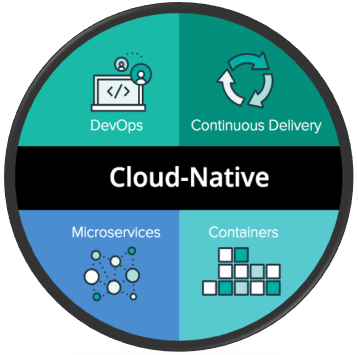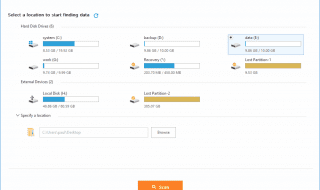
The progression towards a digital transformation revolution in all industries is fast becoming established. Cloud-native development is the orchestrator; the concept continues to evolve for the development of businesses.
The thought is that many organisations are moving their infrastructure to the cloud, from traditional development, in what is a two-fold growth in the introduction of managed cloud services. Meanwhile, businesses work even harder to combine business and IT and enhance optimal processes. Fortunately, cloud-native architecture supports the scope by allowing rapid and simpler management. These apps are created to adopt scale changes with resilience.
Starting from infrastructure services to virtualisation and containerisation, the process of cloud-native comprises various aspects that boost businesses. Now, how do cloud-native apps reshape enterprises? How can cloud-native architecture change the way businesses develop? Below is how cloud-native architecture can change the way businesses develop:
Swifter App Performance Enhancement

Keeping up with the evolving customer expectation is one of the problems to battle out. Your customer does not care how to do it but expects that you offer what satisfies their demand. Otherwise, they dump you for an always-welcoming competitor.
Users expect dev ops teams to respond to their demands timely. It may not be immediate, but you ought to give a timeframe for customers to be on the lookout. Thankfully, cloud-based development delivers performance enhancements to on-demand fashionably.
Besides, many organisations have better flexibility making real-time changes via the cloud-native approach. The outcome is typically pleasing significant expectations on the first attempt and giving the impression that they can expect even better with time.
Meanwhile, continuous delivery, even with little modifications gets you to the limelight and attracts appreciation. Moreover, faster or real-time responses hold higher expectations in check while you address them serially via cloud infrastructure.
Security Enhancement
Without appropriate security professionals, on-premise exposes your business to attacks and data breaches. We know that the attacks reduce your company reputation, and if it continues, you fall out of the competition.
Firewalls and open ports are typical culprits that attract attacks. With cloud-based development, it is more convenient to mitigate attack surfaces. For instance, a serverless container or function allows authorised access only. Also, less security knowledge is needed to safeguard data since the cloud provider does the whole work.
Regardless of your organisation’s security measures, you can implement cloud-based security across every infrastructure while testing and monitoring with reports transferred to IT departments. IT then follows the reports to establish meaningful and relevant strategies that improve business security. You can also boast of the security standards to appeal to customers.
Fix Bugs and Speed Up
Bugs are annoying and relatively costly to manage. They slow download speeds; thus, bringing in bad user experience. If you do not rectify them early enough, you lose a significant customer base. Your competitors are ever-ready to snap up the customers, provide them with excellent services, and stop them from returning to you.
Cloud-native architecture does not only speed up the process of development. It improves the lifecycle of software development by assisting in discovering buggy problems like slow-loading. This model reduces human errors for refined outcomes.
Lightweight API and Flexibility

How about flexibility orchestrated by APIs? Flexible development processes can be exposed to tech-agnostic and API that reduces challenges and maintenance, scalability overhead, and deployment. With exposed APIs, your business can build proficiencies and opportunities internally and externally.
Lightweight APS models merely permit service interface calls communication through the network. And it gets rid of direct linking, direct datastore reads, and shared memory structure. The models also extend the services and applications reach to various devices and forms.
Eliminate the Hassle of Rebuilding Apps
Effecting changes and updates on software platforms in recent times required months of work. Today, concept minimises downtime and saves resources by eliminating cumbersome improvements.
Cloud-native also offers your organisation a bigger array of efficient contemporary options. For instance, you can cornerise large-scale development management on a public cloud to simplify the process. It is faster and involves simpler deployment in an environment with access to updates.
The Unwavering Cloud-Native Concept

Cloud-native infrastructure focuses on flexibility; cloud-native apps are modelled towards cloud flexibility and scalability.
As opposed to traditional monolithic applications, cloud-native applications are designed and deployed in a cloud environment with multiple independent microservices. Moreover, cloud-native development employs an agile approach for building new applications. Software development teams can comfortably, automatically and iteratively include new functionalities to an application using a continuous delivery model established on DevOps.
Cloud-native employs microservices architecture; software developers can create and manage distinct sets of roughly built microservices that make up an application. Software developers do not have to delay by waiting for entire components to update before they can deliver new code into production; they can iterate each microservice independently.
The team can deploy microservices in containers and use container orchestration tools such as OpenShift, Kubernetes, Nomad, and Docker Swam to establish service availability and scale application services automatically.




